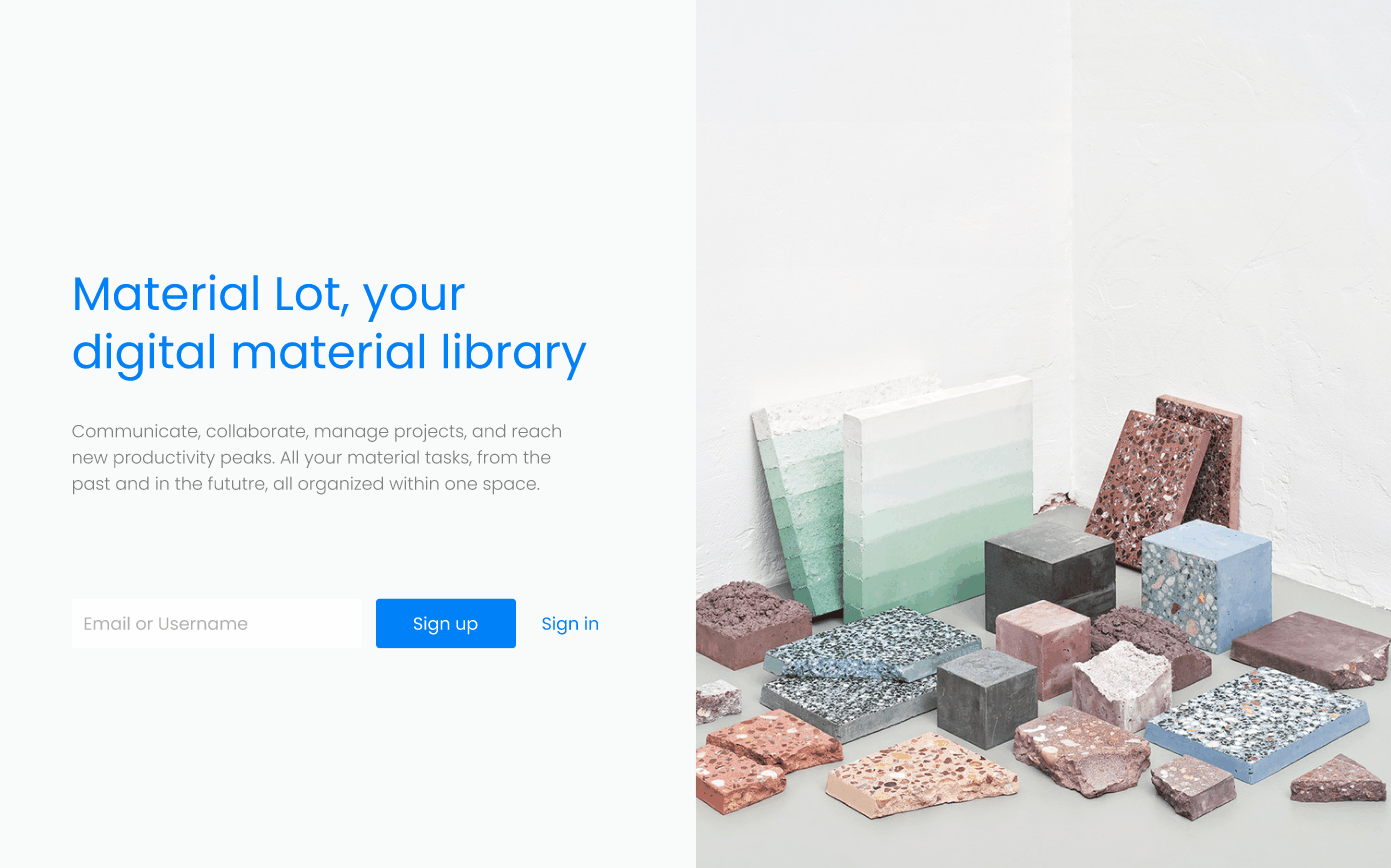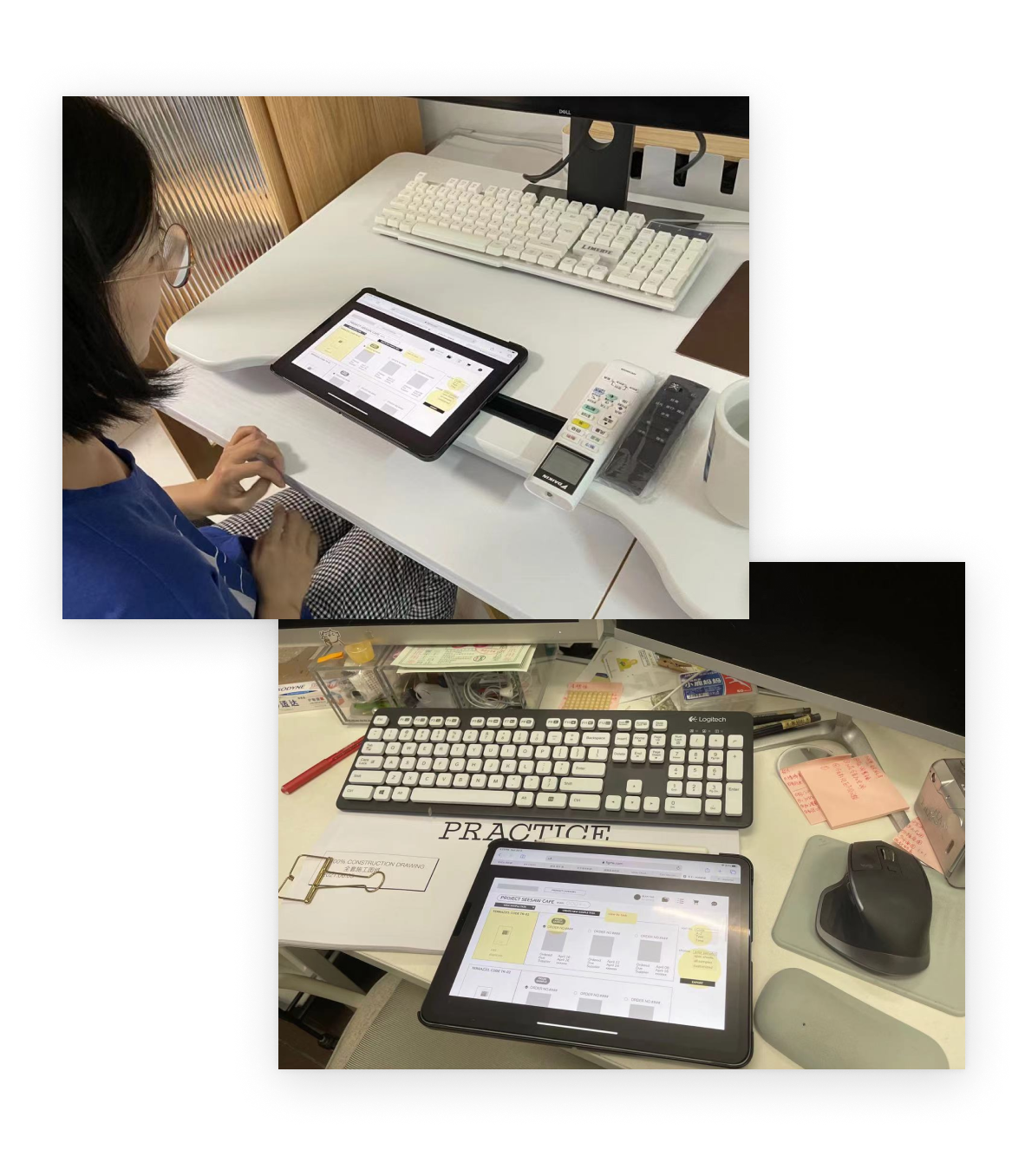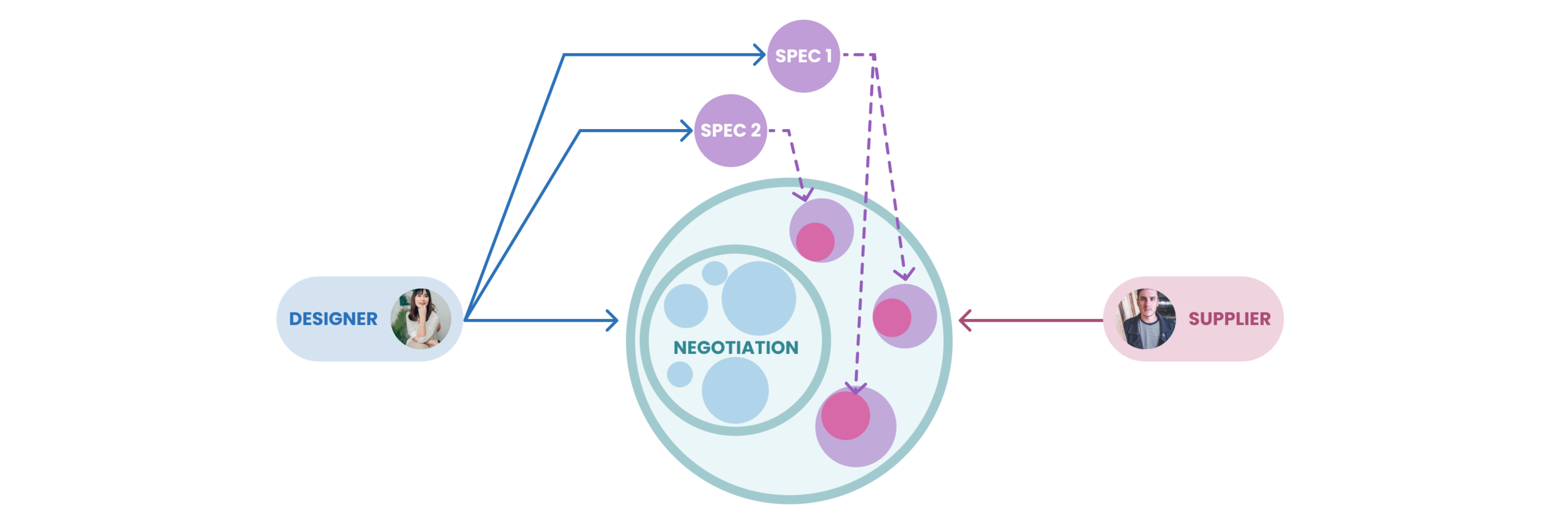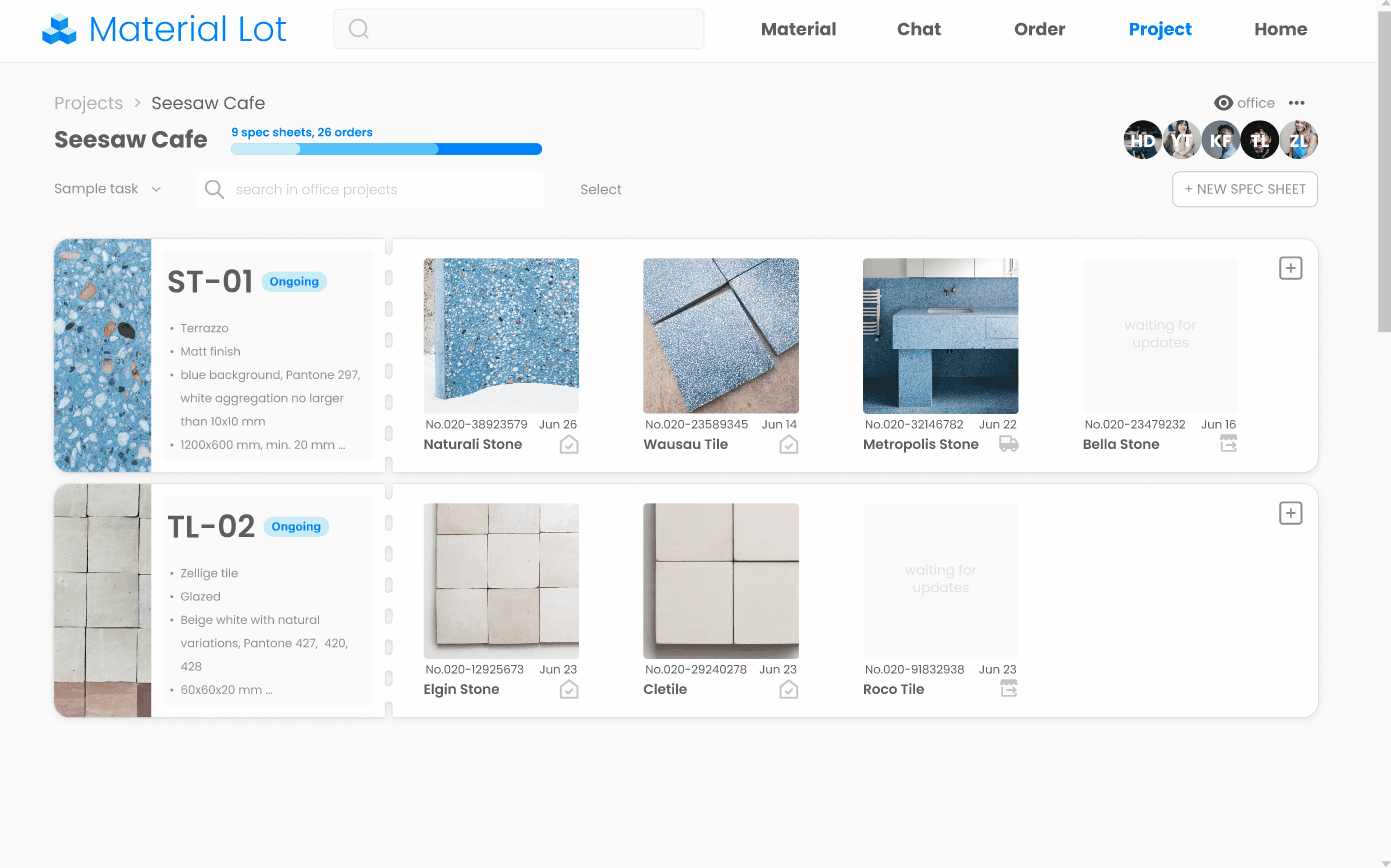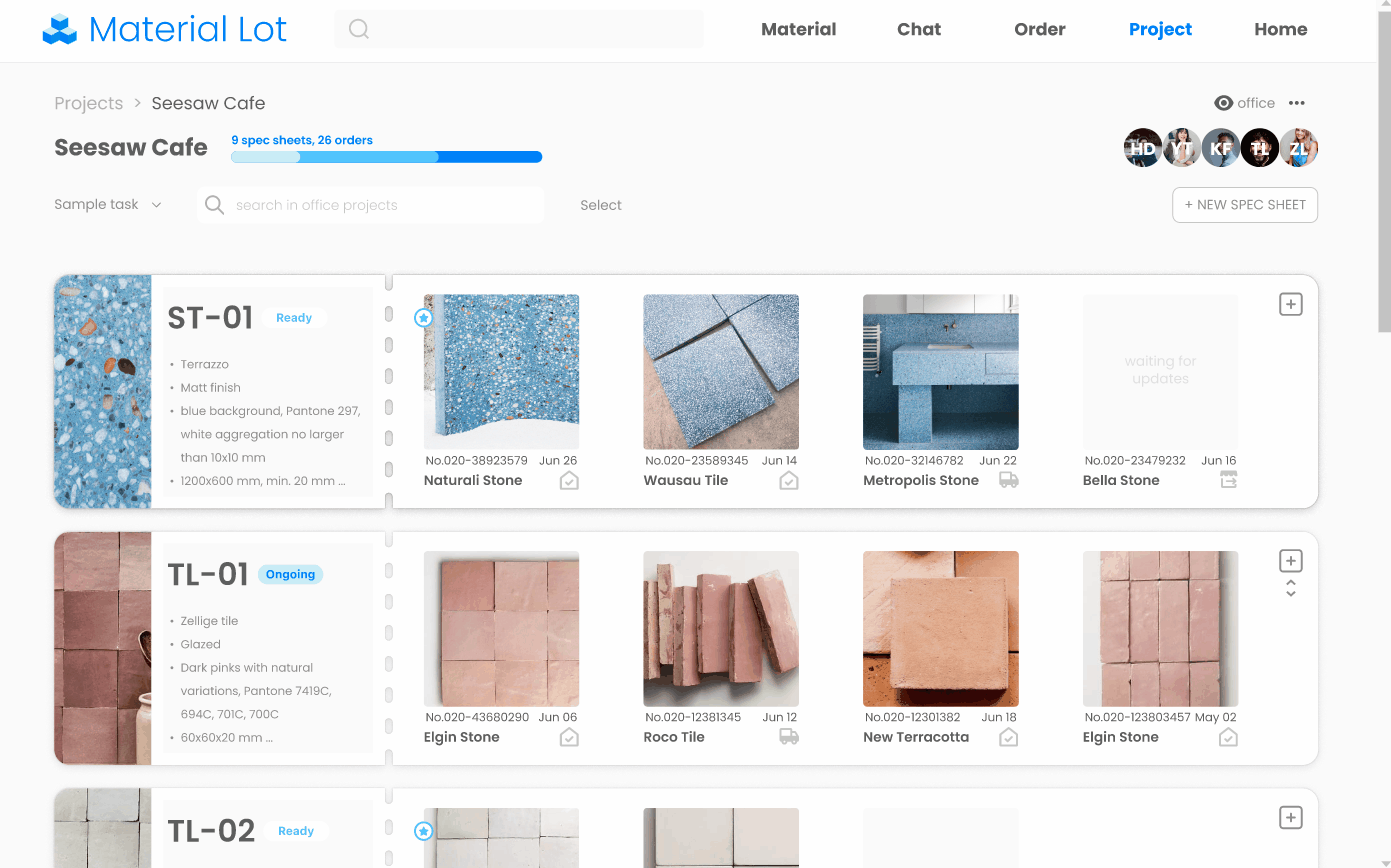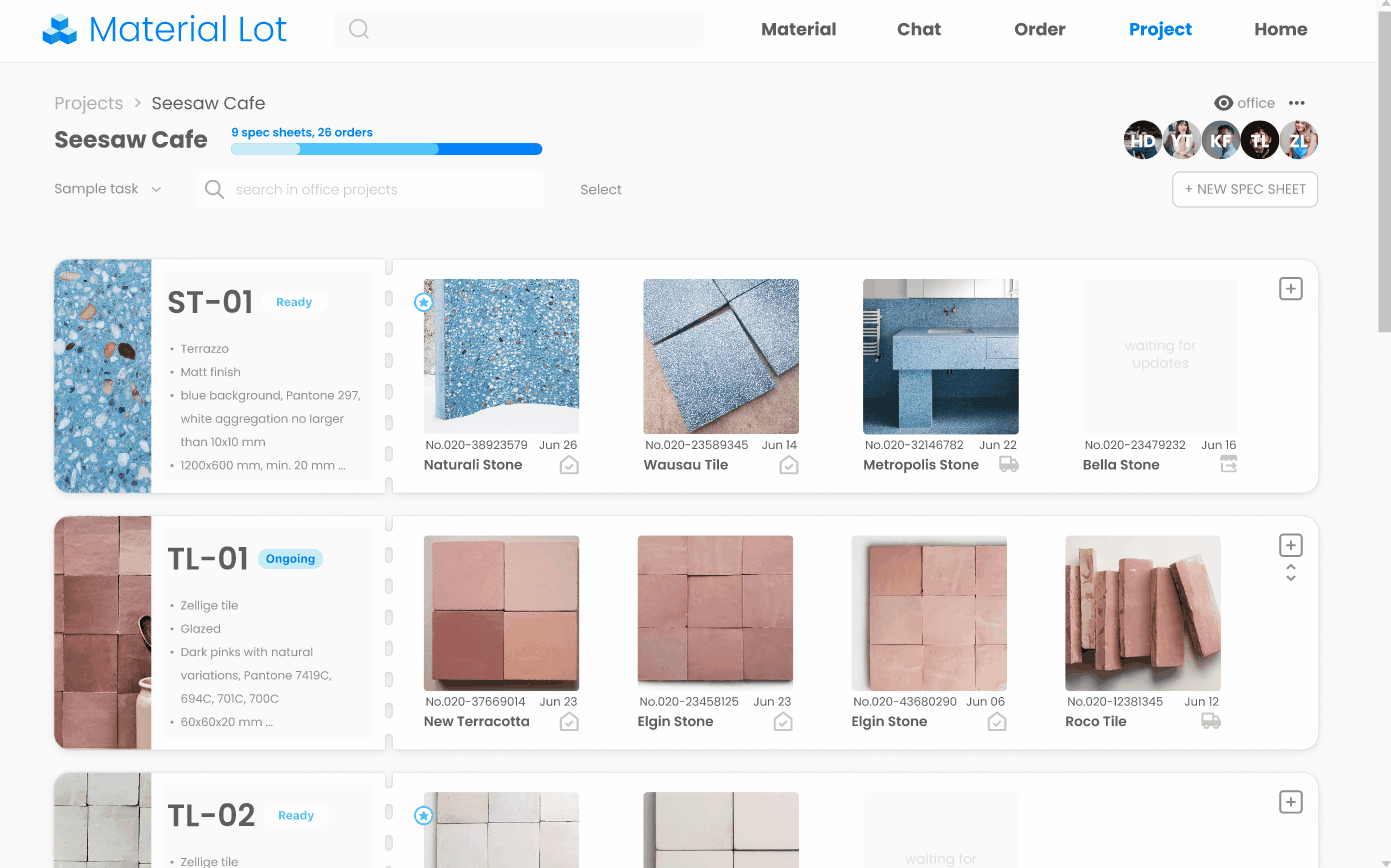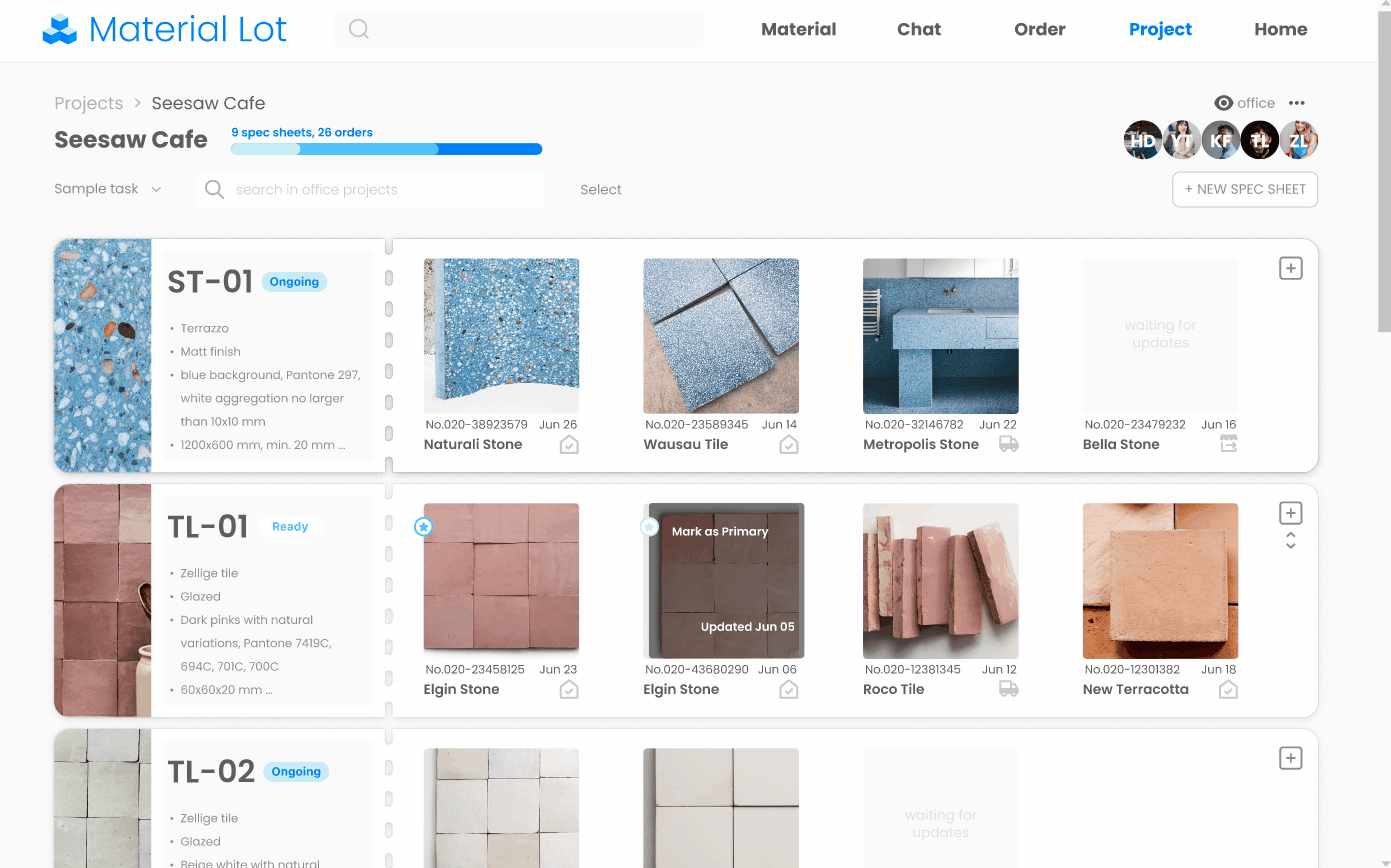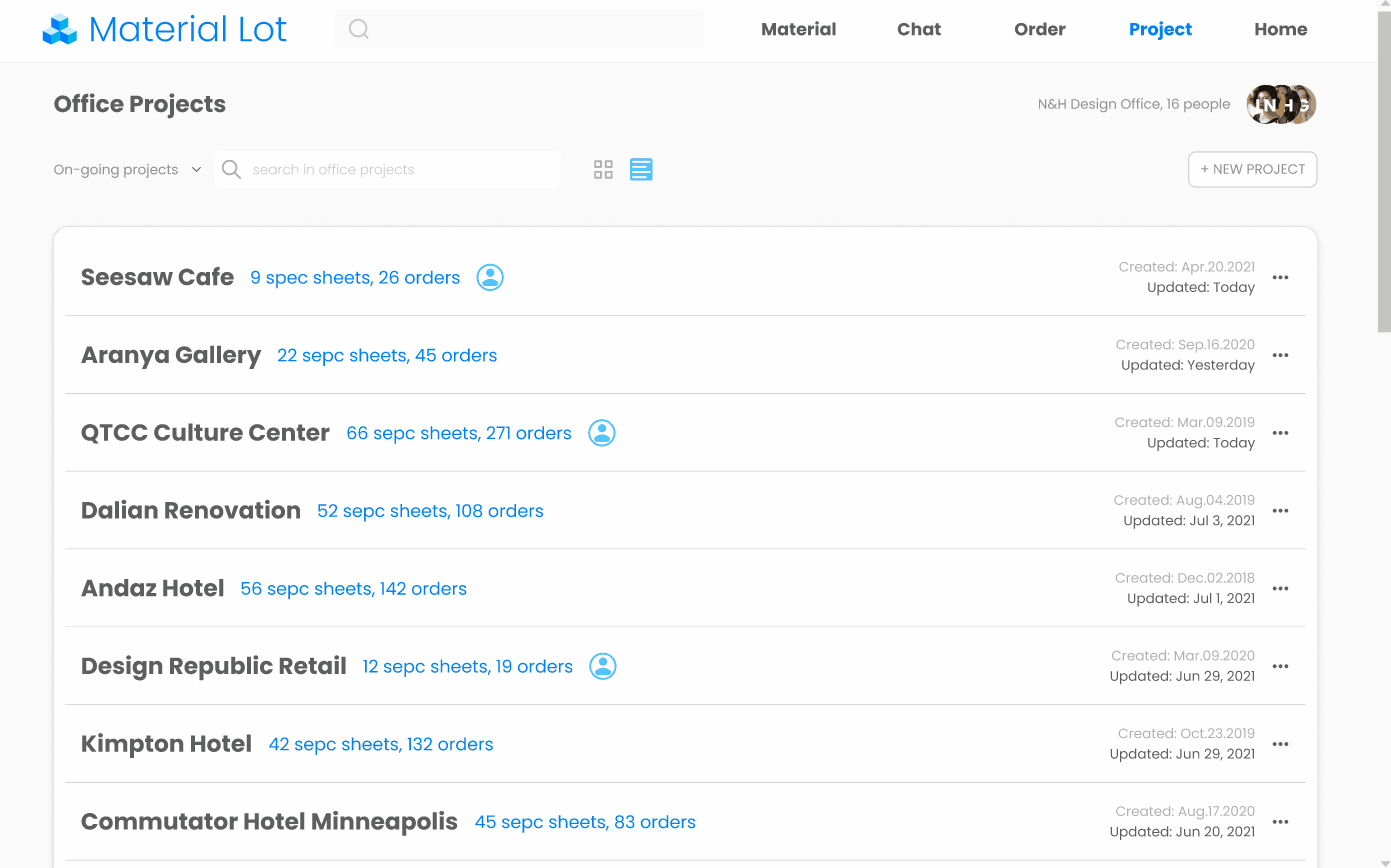
MATERIAL LOT
Material Lot is an on-line material sourcing platform aiming to help architects and interior designers manage sourcing and documentation of material sample customization.
2021, 1Pear UX & Product Workshop
Author / Elan Tao
Keywords / User experience design, product design, service map
Contribution / Independent project
Introduction
How were the materials in our living environment picked ?
In an architecture or interior project, before the drafts and renderings are sent to the construction contractor, there are still one step that will have a major impact on the final built environment: choosing the right materials.
This usually constitutes about 30%-60% workload of the entire project. Architects and interior designers will first check their own material library room, and then ask suppliers to send extra samples to them and clients. When there is no suitable product on shelf, deisgners will ask suppliers to make customized samples, until they find the right materials that express their design intention.
Observation, Interview and Scenarios
What problems will designers come into on their ways to the right material?
The way to the right material is not always smooth. I asked my architect friends and former colleagues to get to know what problems are the most common in the mateiral sourcing process. Based on their description and my own experience, I drew down the main painpoints in several key scenes to make it clear what problems could happen, as well as how and when.
The Service Blue Print
Who are the participants in the process, and what do they do?
I put down this service blue print according to my 6-year’s working experience in the industry. Material sourcing process involves 4 parties, designer, designer leader, material librarian in designer’s office, and material supplier. It usually takes several rounds for designers to finally find the ideal samples and persuade clients to approve them.
The flash icons indicate where the painpoints happen in the process.
Survey
Get credible information
To get further details and opinions about the material sourcing process, I designed 2 questionnaires, one for designers, design leaders, and material library, another for suppliers. The content are as follows:
1. personal information;
2. necessity and intensity of material sourcing in their work;
3. what online platform, software or app they are using; why they use or do not use these tools; their feeling or problems to these tools;
4. what do they think of the other side.
Survey Insights
Current condition and painpoints
After I collected answers from 11 designers, librarians and 10 suppliers, I had a set of numbers I could rely on. The general results were similar to the interview results, but it also revealed some details and reasons I do not know or notice before.
Problem
How might we help architects and interor designers to better connect with material suppliers, and manage their material library more efficiently?
Solution Concept: Online Material Library
Realize target users’ needs &
Filling a gap in the competitive landscape
Like what is shown in the chart above, none of the current platforms do not allow designers to order customized samples, and most of them do not provide documentation function. However, according to the interview and survey, the demands for these 2 are strong, and that might be the reason why few people use current platforms. I would think these 2 functions as the major design tasks for the new product, an online mateiral library.
Solution Concept: The New Dervice Blue Print
How can the online platform interfere traditional material sourcing process?
The new service blue demostrates how the online platform can help the different users in the whole process. The improved parts are highlighted in round-corner color blocks.
Storyboard & Low Fi Iteration
I used storyboard to illustrate in what scenerios users can take advantage of this platform. Based on the scenerios and the new service blue print, I drafted the low fi drawings, in order to walk the potential users through the concepts and functions.
User Feedback On High-level Concepts
I interviewed 5 architects/interior designers and 4 suppliers to get to know their ideas about the initial concepts and functions. Below are the feedback from the target users:
User Interview Insights
What does each party want to achieve? And priority?
User Interview Insights
What should be the core functions in our product?
Mid Fi Development
Find out the best structure for communication
The number of final orders is much smaller than that of the products designers reach out to. To realize the design goals, the information flows between designers and suppliers needed to be carefully studied. Below is the natural process from reaching out to suppliers to ordering the samples, it can be divided into 3 parts:
1. negotiate for general information and feasibility;
2. provide detailed requirements, like a draft of the spec sheet;
3. order the sample and follow up, track the shipment till it arrives.
All these communication are currently done in Wechat app.
Mid Fi - Option Comparison
Since there is a obvious boundary between step 1 “negotiation” and step 2&3, I developed 2 different options for the communicationi tools. The 1st one was to have a live-chat function similar to Wechat on the website, with integrated function of tracking orders in related conversation; the 2nd option is to separate every order and even every conversation based on material type, and the spec sheet, which will finally be handed to clients and contractors. The 2nd option also adopted message board rather than live-chat, in order to encourage users to use more accurate descriptions and reduce the number of times to send messages.
Mid Fi - User Test Feedback
I invited 3 designers who previously participanted the 1st round survey to do a quick user test clicking through the 2 options. They had similar preference to the options, and gave quite a few valuable comments.
I had also interviewed 3 suppliers, and their feedback can be found here. Due to time constrains, supplier’s part was not developed into hi-fi prototypes.
" Our suppliers, many of them might only have high-school degrees. How can we expect them to write formal messages? That will kill them. They will go back using Wechat...I want to make our suppliers feel relaxed, afterall they are giving samples for free."
"I often talk to 2 or 3 suppliers at the same time, it's better to have them compiled on one page than in different windows."
" I think the 1st option already helps but the 2nd one is even better. In the 1st option you actually have to establish 2 folders for 1 project, one process folder and one final folder. But in the 2nd option 1 folder is enough. All the unchosen ones can just stay at the back. And if the director or client wants to change to the alternative option, we can easily do that in one click."
"In the task view I can easily compare our given requirements to the real samples we received. And after receiving all the samples, because we have picked the prior samples, it is easy to see which supplier wins the most prior samples. We will consider them first in future projects to save time and effert."
User Test Insights
Based on the 2nd-round feedback, I developed the communication structure as follows. Spec sheets/material sample sourcing tasks are independent and can be refered into the communication.
Prototype - Add spec sheet / material sourcing task
Prototype - Order a customized sample
Prototype - Complete a task by setting one sample as the primary one
Prototype - Export all spec sheets for clients or contractors
Prototype - Search in office library for previous materials
